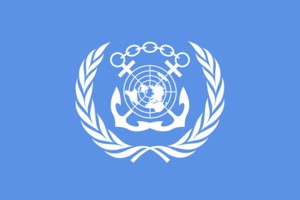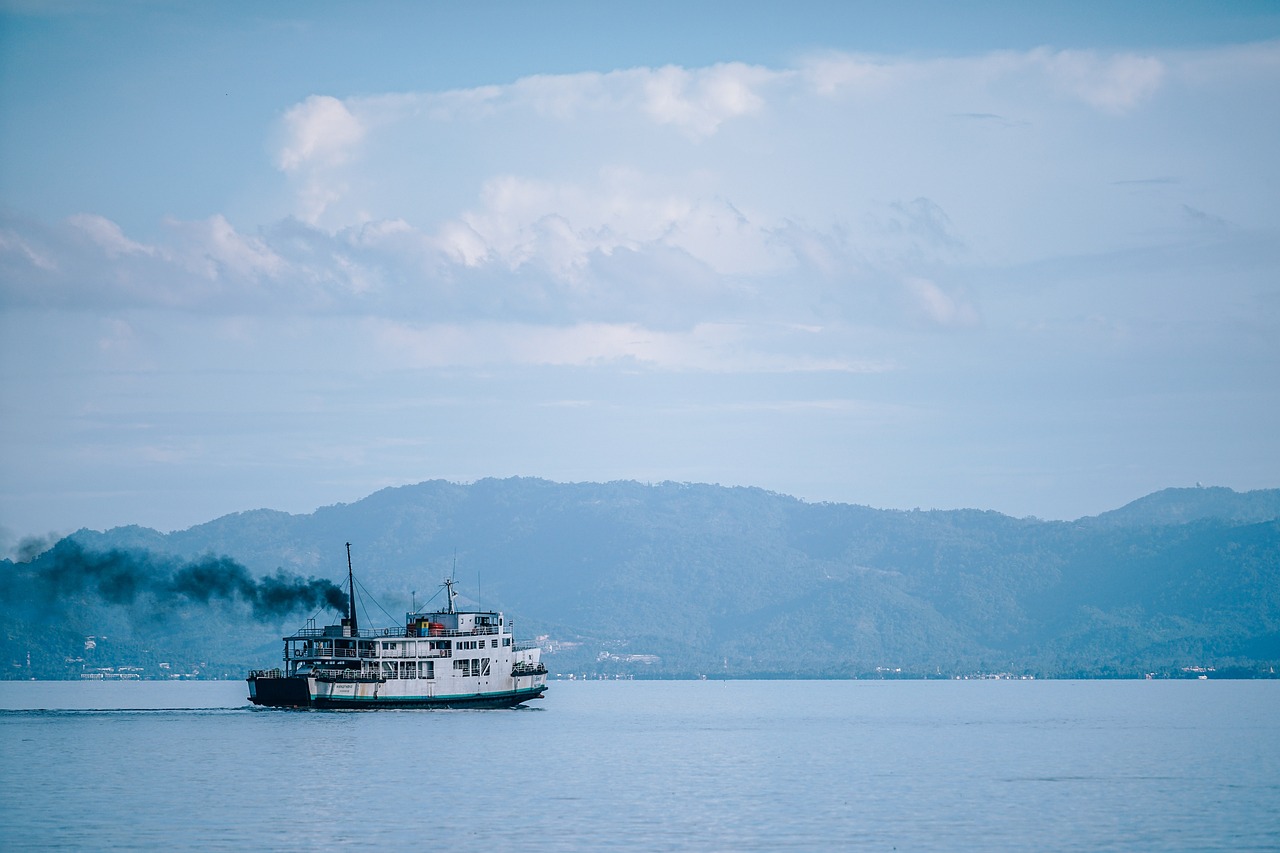
What is the IMO and the marpol convention (annex vI)?
This page explains what The International Maritime Organization (IMO) is and it’s history. This page also anaylsis and lays out the details of the MARPOL Convention, especially focusing on MARPOL Annex VI on Air Pollution through ship emissions, which includes GHG.
The IMO was established as a specialized UN agency in 1948, in accordance with article 57 of the UN Charter. It was founded as the Intergovernmental Maritime Consultative Organization (IMCO), but in 1982 its name was changed to the International Maritime Organization.
The IMO consists of a General Assembly and several permanent committees and sub-committees addressing different maritime topics, such as safety in the Maritime Safety Committee (MSC) and legal issues in the IMO Legal Committee (LEG).
Of particular relevance to enforcement under Part XII of UNCLOS is the IMO’s work on regulating environmental matters in the Marine Environmental Protection Committee (MEPC) and in the sub-committee on Pollution Prevention Response (PPR).
The MEPC was created in 1973 and initially focused on regulating pollution of the sea in the form of spills and discharges of oil, toxic materials and other harmful substances. Yet in recent decades the MEPC has increasingly widened its legislative scope to encompass measures on the discharge of harmful substances into the atmosphere originating from ships. This includes regulations pertaining to sulphur and nitrogen, and, most recently, taking early steps towards regulating GHG emissions, including carbon dioxide (CO2).
You can read more about the IMO here on the Organizations webpage: Introduction to IMO
History of the IMO
The focus of international maritime laws adopted by the IMO (IMCO at the time) broadened throughout the 1960s and 1970s from fully focusing on the safety of ships, passengers, crews and other vessels to also encompassing environmental protection from pollution caused by shipping.
Initially the environmental legislation was linked to pollution emanating from accidents (running aground, collisions etc.), leading to spills of oil and toxic substances. However, the rules of the IMO subsequently also addressed the discharge of harmful substances as part of a vessel’s normal operations.
The International Convention for the Prevention of Pollution of the Sea by Oil (OILPOL), which entered into force on 26 July 1958 is a testament to this as it essentially banned tankers from discharging oil within 50 nautical miles of a coast. Also, from 1969, the Convention Relating to Intervention on the High Seas in Cases of Oil Pollution Casualties (‘the Intervention Convention’) provided coastal States with special jurisdiction to counter pollution hazards from oil spills outside the coastal State’s territory.
In 1972, the Convention for the Prevention of Marine Pollution by Dumping of Wastes and Other Matter (‘the London Convention’) was adopted which sought to address the pollution that occurred when ships, platforms, etc were intentionally dumped in the sea as waste. A Protocol to the Convention was adopted by the IMO in 1996.
In 1973, extensive IMO work culminated in the adoption of one of the most comprehensive international regulatory frameworks for the protection of the marine environment from ship pollution – the MARPOL Convention.
The MARPOL Convention (Annex VI)
When it was adopted the MARPOL Convention included five Annexes, which to this day still impose specific requirements on ships to protect the marine environment from various sources of pollution. Th e five original Annexes covered ‘Regulations for the Prevention of Pollution by Oil ’ (Annex I), ‘ Regulations for the Control of Pollution by Noxious Liquid Substances in Bulk ’ (Annex II), ‘ Regulations for Prevention of Pollution by Harmful Substances Carried by Sea in Packaged Form ’ (Annex III), ‘ Regulations for Prevention of Pollution by Sewage from Ships ’ (Annex IV) and ‘ Regulations for Prevention of Pollution by Garbage from Ships ’ (Annex V). Only the first two Annexes entered into force together with the Convention and the amending Protocol in 1983, the other three being non-mandatory operational Annexes. The remaining three Annexes have since entered into force, making their contents mandatory for the Contracting States
Focusing on Air Pollution – MARPOL Annex VI
Aft er seeing and experiencing the tremendous, devastating impacts on the marine environment following different maritime disasters, the focus of the international community in the 1960s and early 1970s was on preventing such pollution from ships, to which focus the MARPOL Convention and its Annexes I – V bore testament. Then, in the late 1970s and especially in the early 1980s, another source of pollution attracted international attention, including from the IMO. Th is time, it was a form of pollution that can be difficult to see with the naked eye, and as a result of which the immediate damage from a single violation can be hard to determine – air pollution.
The objective of this Annex was to regulate and reduce emission levels of certain airborne pollutants primarily arising from the combustion of marine fuels, including emissions of sulphur oxide (SOx), nitrogen oxide (NOx), volatile organic compounds (VOCs) and ozone-depleting substances (ODS).
In 2011, through the adoption of Resolution MEPC.203(62), Annex VI was expanded to include the regulation of GHG from shipping by introducing rules aimed at increasing the energy efficiency of new ships (EEDI) relating to the reduction of CO2. Later Annex VI was amended to also include operational requirements by introducing a SEEMP plan, a CII limit (Carbon Intensity Index) and EEXI calculations. All setting limits and imposing measures to reduce GHG emissions from ships.


IMO’s regulation on GHG and IMO’s GHG Strategy
IMOs GHG strategy (Initial and Revised Strategy and adopted measures)
On 13 April 2018 the International Maritime Organization (IMO) adopted an initial strategy for reducing greenhouse gas (GHG) emissions from ships on a global scale, which was adopted by Resolution MEPC 304(72) on Initial IMO Strategy on Reduction of GHG Emissions from Ships.
The GHG Strategy was developed since the Paris Climate Agreement did not include shipping. This led to work on an IMO GHG Strategy that would seek to achieve reduction levels consistent with the goals of the Paris Agreement.
A revised GHG strategy was adopted at MEPC 80 in 2023 aiming towards a reduction in carbon intensity of international shipping (to reduce CO2 emissions per transport work), as an average across international shipping, by at least 40% by 2030. The 2023 IMO GHG Strategy also includes a new level of ambition relating to the uptake of zero or near-zero GHG emission technologies, fuels and/or energy sources which are to represent at least 5%, striving for 10% of the energy used by international shipping by 2030.
The strategy includes a specific reference to ‘pursuing efforts towards phasing them out as called for in the Vision consistent with the long-term temperature goal set out in Article 2 of the Paris Agreement. And to peak GHG emissions from international shipping as soon as possible and to reach net-zero GHG emissions by or around, i.e. close to, 2050, taking into account different national circumstances, whilst pursuing efforts towards phasing them out as called for in the Vision consistent with the long-term temperature goal set out in Article 2 of the Paris Agreement.
In accordance with the timelines set out in the Strategy and the Work Plan to progress development of mid- and long-term GHG reduction measures (approved at MEPC 76), a basket of candidate measure(s), delivering on the reduction targets, should be developed and finalized comprised of both:
- A technical element, namely a goal-based marine fuel standard regulating the phased reduction of the marine fuel’s GHG intensity; and
- An economic element, on the basis of a maritime GHG emissions pricing mechanism.
Enforcement of the Technical Element in the form of a Fuel Standard which sets limits for GHG emissions from ships can be enforced under UNCLOS as described here: UNCLOS on MARPOL Annex VI.
Furthermore, if a Fuel Standard eventually aims towards zero emissions from shipping, it could (in the view of this author) lead to the such a rule being the first environmental Jus Cogens norm.
This would have immense consequences in terms of enforcement i.e. broadening the jurisdictional rights and obligations of coastal and port States for enforcing against foreign ships, also when ships doing innocent passage or transiting an international strait or Exclusive Economic Zones, by conferring jurisdictional rights for all States to enforce following the principle of Universal Jurisdiction, but also obligating all States (including flag States) to enforce due to such a “jus cogens” norm also being subject to a erga omnes norm. Thus all States would, irrespective of them being party to international (IMO) legislation and/or UNCLOS, be subject to State Responsibility under the convention of Article on Responsibility of States for International Wrongful Acts (ARIWA) if falling to do so as described here: Enforcement of IMOs GHG Strategy
All this, and more, is described in part IV of the book “Enforcing International Maritime Legislation on Air Pollution through UNCLOS” which can be seen here: Book About UNCLOS and bought here: Bookshop